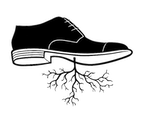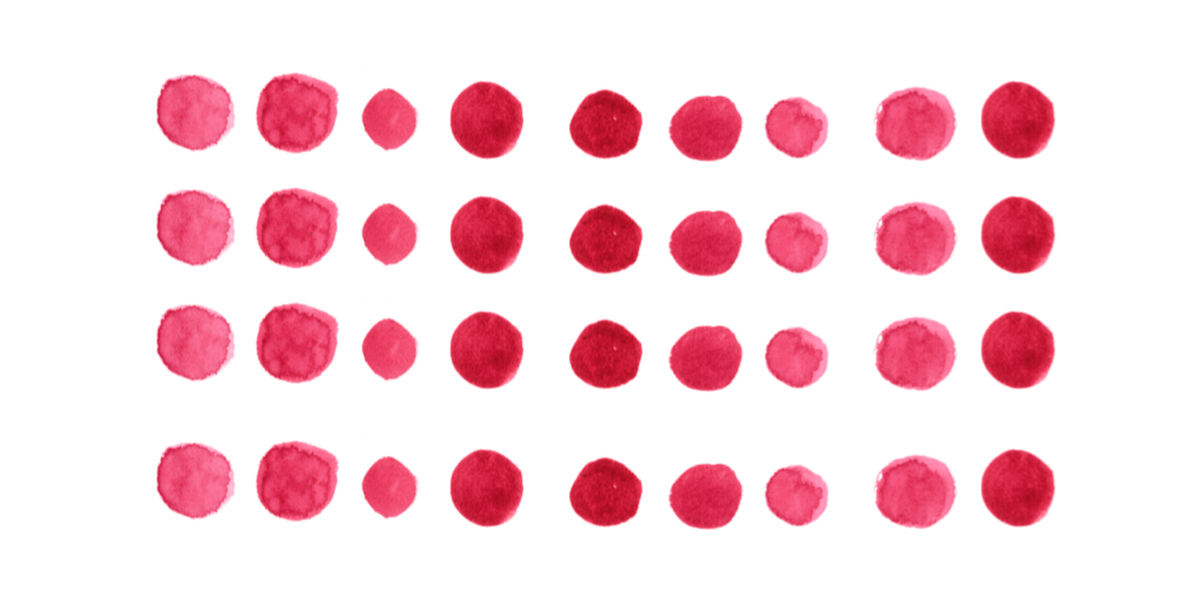At the age of twenty-eight, I’ve accepted that I do not know, and have never known, how I look. I have never thought that I was beautiful. I have many siblings, but none with whom I share both mother and father. As a black woman moving in predominantly white spaces, in my formative years what I knew to be beautiful was blonde hair, thin bodies, blue eyes, dazzling white teeth. What could I compare myself to? The quandary left me obsessed with averages, committed to a clinical analysis of what I should look like.
My hair is almost black, but when I buy packets of hair that I twist into my own, the shade is either 1B or 2. Sometimes I go as light as 4. When researching this piece, I stumbled on a website that told me, ‘A survey in [the] UK has actually revealed brown, dark brown or black as the most popular hair colour.’ At the moment, my natural hair is encased in a headwrap, protected from the outside world – my response to having my hair grabbed by a white man in a club two days before writing this piece.

I think about my eyebrows a lot, always wishing that I could master the mysterious tricks that have made eyebrow grooming such a phenomenon in the past few years. I asked my younger sister what her eyebrow routine is. She said,‘I brush them every morning after my shower with a spoolie to make sure all the hairs are going in the same direction. Then I go in with my NYX Micro Brow pencil to fill in any sparse areas. I clean up around the whole eyebrow area using my LA Girl. I also get them threaded once a month.’ In response I said simply, ‘What the hell is a spoolie?’
According to a YouGov report smugly entitled ‘British public swoon for blue eyes’, 34 per cent of British people find blue the most attractive eye colour. The top comment on this piece reads: ‘I agree with blue being top but mainly because dark brown creeps me out, makes me think of the dark eyes of a serial killer.’ My eyes are dark brown. Between the ages of eleven and sixteen, I looked into surgery to change my eye colour every two weeks.
I once had dinner with a friend and his family where we discussed the correlation between beauty and facial symmetry. His mother looked across the table at me and said, ‘You must have a very symmetrical face, then.’ I have held this comment in my heart ever since. I doubt she remembers it.
Fortunately, there are tests online which allow you to measure exactly how symmetrical your face is, how average your features are. These wholly depressing sites exist to suggest how we might improve what we didn’t know we needed to fix, until we took one wrong turn on the Internet and found ourselves thinking, ‘So which parent should I blame for my nose?’ I found one of these; it is called Prettyscale.com and its landing page demands, ‘Am I Beautiful or Ugly?’ Below, in much smaller print, there is a warning that I shouldn’t proceed with the test if I have low self-esteem. No stranger to mental masochism, I proceeded. The results told me that I have a long face, a normal forehead size (the average-seeker in me was elated), wide interocular distance (lots of space between my eyes), a nose too wide for my face, a mouth too small for the nose that is too wide, and too small a chin. It confirmed that I have good facial symmetry. My overall score was 45/100: You are ugly.
For all intents and purposes, my facial features, set against the standard ideal of beauty, tell me that I am ugly. I have always known that I wasn’t regarded in the same way that my friends were by the boys around us. This experience was validated when I read Afua Hirsch’s Brit(ish): On Race, Identity and Belonging, which discusses how ‘black people face a unique penalty in online dating – with men of other races rating black women as up to 20% less attractive than average.’ As someone who hasn’t touched a dating app since a white man told me that he only wanted to meet me for sex, and that my questions about his life, job, arrest record and so on were ‘high maintenance’, I have no interest in impressing such men. There is substantial evidence to suggest that there is no point.
At 5’6″, I am slightly above average height for a woman in the UK. But when I was at school, two of my best friends were 5’11” and another was 6 feet tall – so the news of this statistic was very confusing to me when I first came across it. The average clothes size for that same, theoretical UK woman is size 16. But the average ‘ideal’ dress size – the size women most aspire to – is a 12. Sometimes I wear a size 14 (if it stretches), sometimes a size 18. It depends on the shop. In Zara, I cannot fit into anything. When friends try on dresses and shirts, I go and browse the scarves, feigning interest in the brightly coloured fabrics. Which isn’t to say that I don’t like my body. My body is very healthy.
I used to work in a bra shop, so I’ve seen hundreds of pairs of breasts. And I never once saw a pair as pert as the ones that I have seen on TV and in films. My bra size is 34JJ, considerably larger than the UK average of ‘a buxom 36DD’. Despite never having seen huge, pert natural breasts, I have wasted time worrying about mine. An equally big-breasted friend once said to me, ‘Candice, how can boobs as big as ours be expected to point to the ceiling?’ That helped.
My skin is brown and inexplicably soft, despite my rarely moisturizing it. I have stretch marks on my arms and my hips and, like one in three young adults in the UK, I also have four tattoos. My brown skin sets me apart from those around me: I’ve modified it in an attempt to take control of that difference. The first tattoo, on my shoulder, is of a fox, after a nickname given to me by a cousin. I gave her the same nickname. The second is for an old friend, a best friend. I told him when I was twenty-two that nobody had ever given me flowers. When we next saw each other, he gave me a bunch of roses. He passed away two years later. The third, on my stomach, is of a crown, more roses and a heart with a banner running underneath it. The banner reads ‘Candice’. And last, the largest: a giant castle, drawn freehand by the tattoo artist, because one of my favourite books is I Capture the Castle by Dodie Smith. I named my own castle after the tattooist: Elizabeth Taylor.
If it is deemed unattractive to be big-boned, surely one should wish for small, dainty bones to attract the opposite sex? According to two academic journals, black women have lower bone density than black men but higher bone density than white men. I like to think that my bones are very strong: I have never broken one, and when I sit next to white friends and compare my wrists to theirs, I can see how much bigger mine are. I think about how even my skeleton, completely unseen, is a measure of what is attractive. My bone density is yet another test I have not passed.
In the white spaces through which I move, I am invisible and painfully visible at the same time. Not being average sets me apart from the crowd, while not being desirable, the result of being different, renders me unseen. Measuring myself against what I have been told is ‘normal’ has an insidious toxicity. I am so self-critical that I’ve never been able to disentangle myself from the expectation of average; it has left me distanced from any ideal of beauty that I might fit into.
And yet I see black women who have long, short, straight, afro hair, with eyebrows as sharp as razor blades and eyes as dark and deep as onyx, and I am overwhelmed by how beautiful they are. I see black women whose asymmetrical faces have me captivated, black women who are 4’11” or 6’2″, who have heavy, maternal breasts or none at all. Black women who are as light as MAC foundation shade NC40 and those who are many shades darker. I take in their beauty, its spectrum of wonder, with my eyes separated by a huge distance, and I smile with a mouth too small for my nose. I am not average. I do not need to be.

